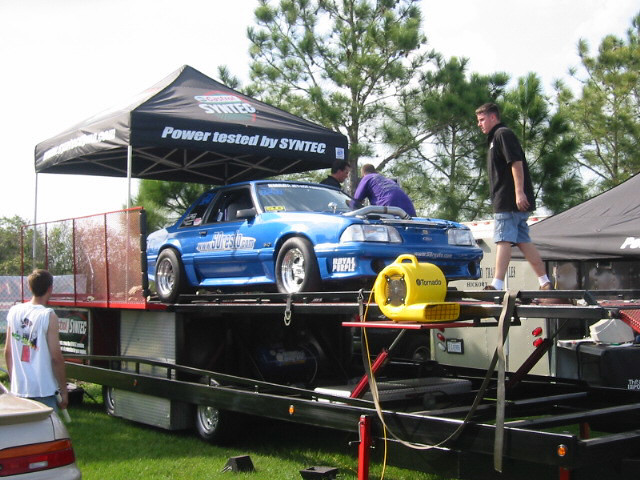Contents
– What is the power dyno?
– Characteristics of the dyno
– Use of the power dyno
– Price of a power dyno test
Suppose you want to know the power of your car. In that case, whether it is by simple curiosity or after an engine preparation, the power dyno is a solution allowing you to estimate it as closely as possible.
What is a power dyno, and why use it?
The power dyno is intended to estimate the power of an engine. It can give a car enthusiast a more precise idea of the performance of the mechanics of his car.
After an engine preparation intended for competition or a reprogramming of the electronics managing the engine and possibly the transmission, if it is automatic, the power dyno also makes it possible to assess its efficiency. However, it must be carried out by a service provider independent of the tuner.
Do not lose sight of two points before use:
– The power dyno allows for a simple estimate that cannot be perfect.
– The vehicle submitted to such a test must have running gear (transmission, tires, suspension and braking) in perfect condition. A blockage, a breakage of one of them or a tire blowout can cause severe damage to the vehicle.
How the power dyno works
There are two types of power dynos for testing internal combustion engines.
The first is used in the laboratories of car manufacturers, engine builders and tuners. It only tests engines without a vehicle.
The second, called a chassis dynamometer, is of interest to individuals who want to know the estimated ground power of their vehicle. It allows to do it by installing the car on rollers. After strapping it down so that it is held on the dyno without the risk of leaving it during the tests, the technicians make the car reach speeds that allow them to determine engine power and torque values at different speeds. A computer software determines the car’s ability at ground level and the power losses due to the transmission, the tires, and the rolling resistance on the ground.
Characteristics of the power dyno with rollers

The power dyno has several rollers, depending on the number of driving wheels being tested. The dynos are driven by the vehicle but have a braking system. Two types of dynos are used:
– The inertial dyno: not equipped with eddy current brakes; it allows measurements to be taken during acceleration, known as inertial measurement.
– The braked dyno: equipped with eddy current brakes, it allows measurements to be taken with stabilized engine speeds and facilitates measurements of engines supercharged by compressor or turbocharger.
Good to know: the eddy current brake is a braking system operating by the circulation of a current in electromagnets, which tightens the disc located between them. This system can be found in addition to conventional braking on trucks, for example.
When a vehicle is placed on the power dyno, it is also equipped with an elevator. Straps are used to maintain it correctly on the bench by preventing it from moving sideways during the test.
Auxiliary fans allow the circulation of fresh air to avoid overheating the engine.
Use of the power dyno

The vehicle is placed on the elevator, which puts it on the power dyno’s axis. It is then strapped down. The fans are placed facing the grille. The transmission ratio is measured, and the data is programmed into the control computer.
Once the engine is at operating temperature, the tests can begin.
– Inertial measurement: As the name suggests, this measurement is based on the car’s inertia. It is pushed at full load for 30 seconds to carry out the first measurement of power and torque at the wheels. The transmission is then uncoupled, leaving the car freewheeling until it comes to a stop, which allows the dyno to measure the losses due to deceleration. The total of the two measurements gives the estimated ground torque.
– Dynamic measurement: Its operation is comparable to the inertial measurement, but the use of the eddy current brake makes it possible to simulate a more important load, adapted to the power of the engine, in particular for supercharged cars.
– Measurement in braked mode at stabilized speed: This measurement helps adjust competition engines; it consists of using the eddy current brake to equalize the traction effort of the car to calculate the power by using the data provided by the effort sensor. The vehicle is launched at full speed while maintaining a constant engine speed for at least ten seconds to emit the maximum power at the given speed. The power dyno must also ensure efficient cooling of the engine at the high speeds reached.
Price of a power dyno test
The average cost of a dyno test on a car is between $70 and $80.




